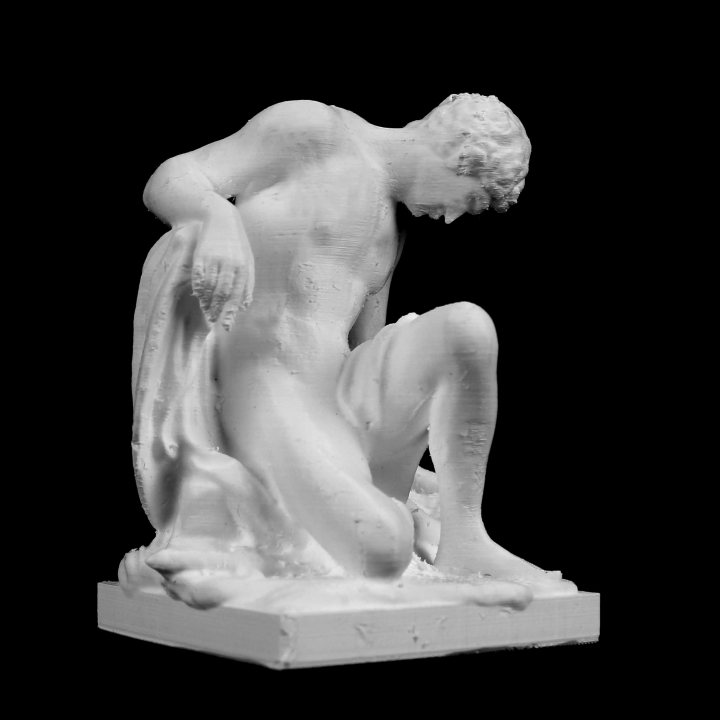
Dying Gladiator at The Louvre, Paris
myminifactory
A dying gladiator, his mortal wounds a testament to his unwavering courage, stands tall, clutching the laurel crown awarded him for his bravery. This poignant work is Pierre Julien's second attempt at gaining admission into the Académie Royale de Peinture et de Sculpture, and it proves crucial in securing his place within its esteemed ranks. Following a rejection in 1776 with his statue of Ganymede, possibly due to his teacher Guillaume II Coustou's lack of support for his talented pupil, Julien was met with disappointment and humiliation. Undeterred by this setback, he persevered, encouraged by friends, and presented Dying Gladiator to the Académie in 1778. His perseverance paid off when he was admitted on March 27, 1779, and appointed an assistant teacher in 1781. This masterpiece showcases Julien's mastery of academic criteria while asserting his unique personal qualities. The statue is a bold declaration of his knowledge of antique sculpture, as he reinterprets the Dying Gladiator from the Capitoline Museum in Rome. The pose of the legs appears to be inspired by the renowned ancient sculpture The Knife Grinder in Florence, executed by Italian artist Foggini in 1684 for Versailles. Julien's nude gladiator exemplifies his complete command of anatomy and drapery at the rear of the statue. However, it is Julien's personal touch that imbues the work with its sensitivity: the elegant proportions, unctuous modeling, and delicate execution (the finesse of the hands, laurel leaves, and strands of hair) demonstrate a level of skill unmatched by his contemporaries. The marble's perfect finish and the rendering of textures (the polish of the shield and sword suggest their metallic brilliance) are testaments to Julien's exceptional craftsmanship. This work is a resounding tribute to the revival of classical sensibility in the 1770s, a movement sparked by sculptors Edme Bouchardon and Jean-Baptiste Pigalle in the 1740s. Julien's masterpiece exalts the heroism of a man overcoming pain and dying with stoic silence. The balanced composition, dignified pose, discreet chest wound, and restrained expression are formal echoes of this heroic serenity. Like the Laocoon, one of the most revered ancient statues at that time, the gladiator is in agony but not crying out in pain, and it is this dignity in suffering that makes the figure more sensitive and introspective. A critic at the 1779 Salon aptly captured our empathy: "He is a wretched soul expiring, whose pain we share; in short, this figure is all soul." This digital sculpture is part of "Scan The World," a non-profit initiative by MyMiniFactory aimed at creating a digital archive of fully 3D printable sculptures, artworks, and landmarks from around the globe for public access. Scan The World is an open-source community effort, inviting anyone with interesting items to contribute by emailing stw@myminifactory.com.
With this file you will be able to print Dying Gladiator at The Louvre, Paris with your 3D printer. Click on the button and save the file on your computer to work, edit or customize your design. You can also find more 3D designs for printers on Dying Gladiator at The Louvre, Paris.
